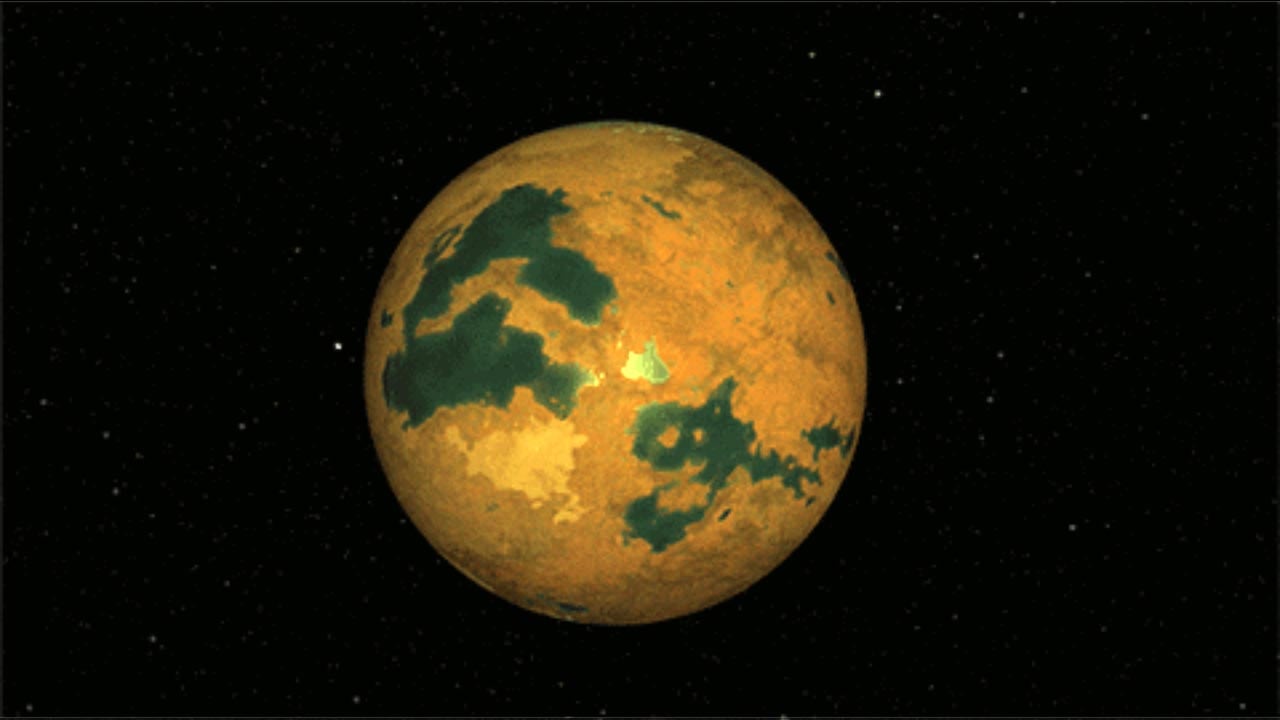Artist’s concept of a previously proposed possible planet, HD 26965 b – often compared to the fictional “Vulcan” in the Star Trek universe. Credit: JPL-Caltech
New research refutes the existence of Vulcan, a planet thought to orbit around 40 Eridani A, attributing the detected signals to the surface activity of the star.
A planet believed to be orbiting the star 40 Eridani A — host to Mr. Spock’s fictional home planet, Vulcan, in the Star Trek universe — is actually a type of astronomical illusion caused by the pulsations and oscillations of the star itself . This is according to a new study published in The Astronomical Journal.
Initial excitement and subsequent doubts
The possible discovery of a planet orbiting a star that Star Trek made famous attracted excitement and a lot of attention when it was announced in 2018. Just five years later, the planet appeared to be on shaky ground when other researchers questioned whether it was even there. Now the precise measurements using a NASA-The NSF instrument installed a few years ago atop Kitt Peak in Arizona appears to have returned the planet Vulcan even more firmly to the realm of science fiction.
Methods for detecting exoplanets
Two methods of finding exoplanets—planets orbiting other stars—dominate all others in the ongoing search for strange new worlds. The transit method, observing the slight dip in starlight as a planet crosses the face of its star, is responsible for most of the detections. But the “radial velocity” method has also amassed a healthy share of exoplanet discoveries. This method is especially important for systems with planets that, from Earth’s perspective, do not cross the faces of their stars. By tracking subtle changes in starlight, scientists can measure “wobbles” in the star itself, as the gravity of an orbiting planet pulls it one way or another. For very large planets, the radial velocity signal mostly leads to unambiguous planet detection. But not so big planets can be problematic.
Questioning the existence of Vulcan
Even the scientists who made the initial, possible discovery of a planet in HD 26965 b – almost immediately compared to the fictional Vulcan – warned that it could be a confused stellar wobble masquerading as a planet. They reported evidence of a “super-Earth”—larger than Earth, smaller than Neptune – in a 42-day orbit around a Sun-like star about 16 light-years away. The new analysis, using high-precision radial velocity measurements not yet available in 2018, confirms that caution about the possible discovery is warranted.
The NEID tool clarifies doubts
The bad news for Star Trek fans comes from an instrument known as NEID, a recent addition to the telescope complex at Kitt Peak National Observatory. NEID, like other radial velocity instruments, relies on the “Doppler” effect: changes in a star’s light spectrum that reveal its wobbly motions. In this case, analyzing the planet’s putative signal at different wavelengths of light emitted from different levels of the star’s outer envelope, or photosphere, revealed significant differences between individual wavelength measurements—their Doppler shifts—and the total signal when all they were combined. This means that in all likelihood the planet’s signal is really the wobble of something on the star’s surface that coincides with a 42-day rotation—perhaps the stirring of hotter and cooler layers beneath the star’s surface, called convection, combined with stellar surface features such as spots and ‘spots’, which are bright, active regions. Both can alter the star’s radial velocity signals.
Potential for future discoveries
Although the new discovery, at least for now, deprives star 40 Eridani A of its possible Vulcan planet, the news is not all bad. Demonstration of such fine-tuned radial velocity measurements promises to make clearer observational distinctions between actual planets and the wobbles and rattles on the surfaces of distant stars.
Even the destruction of Vulcan is expected in the Star Trek universe. Vulcan was first identified as Spock’s home planet in the original 1960s TV series. But in the 2009 Star Trek film, a Romulan villain named Nero uses an artificial one Black hole to blast Spock’s home world out of existence.
A scientific team led by astronomer Abigail Burroughs of Dartmouth College and formerly of NASA’s Jet Propulsion Laboratory published a paper describing the new result, “Vulcan’s Death: NEID Reveals Planet Candidate Orbiting HD 26965 as Stellar Activity.” ” in The Astronomical Journal in May 2024 (Note: HD 26965 is an alternate designation for the star, 40 Eridani A.)
Reference: “The Death of Vulcan: NEID Reveals Planet Candidate Orbiting HD 26965 Is Stellar Activity*” by Abigail Burrows, Samuel Halverson, Jared S. Siegel, Christian Gilbertson, Jacob Lunn, Jennifer Burt, Chad F. Bender , Arpita Roy , Ryan C. Terrien, Selma Vangstein, Suvrath Mahadevan, Jason T. Wright, Paul Robertson, Eric B. Ford, Gumundur Stefánsson, Joe P. Ninan, Cullen H. Blake, Michael W. McElwain, Christian Schwab, and Jinglin Zhao 26 Apr 2024, The Astronomical Journal.
DOI: 10.3847/1538-3881/ad34d5



